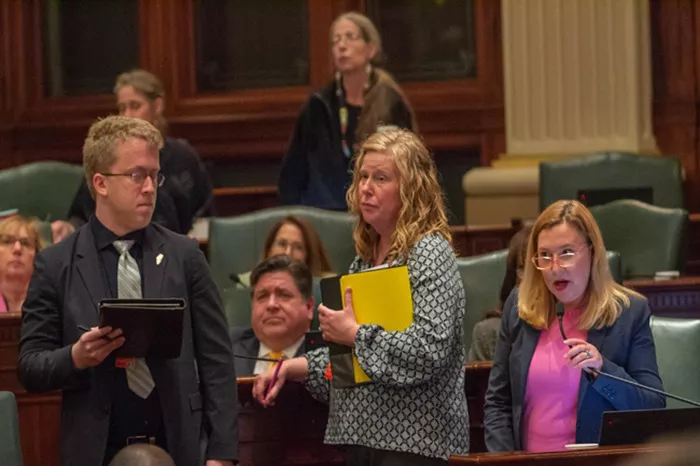Flooding is one of the most common and costly natural disasters in the United States, and Ohio is no exception. With its varied climate, proximity to rivers, lakes, and heavy rainfall patterns, many homeowners in Ohio face the risk of flood damage. Despite this, flood damage is not typically covered under standard homeowners insurance policies. This is why flood insurance is a crucial consideration for Ohio residents, especially those living in flood-prone areas. But how much does flood insurance in Ohio actually cost? This article provides a detailed insurance guide that explores flood insurance rates, factors influencing costs, and tips on how to get reliable flood insurance coverage in Ohio.
Why Do Ohio Residents Need Flood Insurance?
Many Ohio homeowners mistakenly believe that flooding is rare or unlikely to affect them, but flood damage can occur anywhere—even outside of designated flood zones. Ohio has experienced significant floods historically, affecting both urban and rural areas. Without flood insurance, homeowners risk bearing the full financial burden of repairing damage caused by floods, which can easily amount to tens of thousands of dollars or more.
Standard homeowners insurance policies usually exclude flood damage, meaning flood insurance must be purchased separately. The National Flood Insurance Program (NFIP) offers federally backed policies, but private flood insurance is also available. Both options provide critical protection, but the costs can vary widely.
Understanding Flood Insurance Rates in Ohio
The cost of flood insurance in Ohio depends on multiple factors, making it challenging to provide a one-size-fits-all answer. On average, flood insurance premiums for a typical Ohio home range from $500 to $1,500 per year, but this can fluctuate significantly based on individual risk factors. Here are the key elements that influence flood insurance rates in Ohio:
Flood Risk and Location
Ohio’s flood insurance rates are heavily influenced by the property’s location and its proximity to flood-prone areas. Areas near rivers, lakes, or with poor drainage systems usually have higher rates. The Federal Emergency Management Agency (FEMA) uses Flood Insurance Rate Maps (FIRMs) to classify flood risk zones. Properties in high-risk zones (Special Flood Hazard Areas or SFHAs) typically pay more for coverage.
Building Characteristics
The age, elevation, and construction type of the home affect flood insurance costs. Homes built on elevated foundations or those constructed with flood-resistant materials may qualify for lower premiums. Similarly, newer homes built to modern building codes designed for flood resistance often enjoy better rates.
Coverage Limits and Deductibles
Flood insurance policies have set coverage limits. The standard NFIP policy provides up to $250,000 in building coverage and $100,000 for contents. Choosing higher limits or lower deductibles will increase premiums. Ohio homeowners should carefully consider the value of their property and possessions when selecting coverage limits.
Claims History
A property’s history of flood claims can affect insurance rates. If the home has experienced multiple flood claims, insurers may charge higher premiums or require additional underwriting scrutiny.
How to Get Accurate Flood Insurance Quotes in Ohio
Obtaining accurate flood insurance quotes is a critical step in securing proper coverage. Homeowners should start by consulting the NFIP, which is administered by FEMA and provides a baseline for flood insurance rates nationwide, including Ohio. However, private insurance companies also offer flood policies that can sometimes offer more flexible coverage or competitive rates.
When comparing flood insurance quotes, consider the following:
- Compare rates from multiple insurance providers, including both NFIP and private insurers.
- Verify what flood insurance coverage is included and what exclusions apply.
- Check if the insurer is a trustworthy insurance company with solid customer service and claims handling reputation.
- Ask about discounts for flood mitigation efforts such as installing sump pumps, flood vents, or elevating your home.
Flood Insurance Coverage: What Does It Include?
Understanding what flood insurance covers is essential for Ohio homeowners to make informed decisions. Flood insurance typically covers direct physical loss caused by floodwaters, including:
- Damage to the building’s structure and foundation.
- Electrical and plumbing systems.
- HVAC equipment.
- Personal belongings such as furniture, clothing, and electronics, subject to coverage limits.
- Temporary living expenses if the home is uninhabitable after a flood.
However, flood insurance generally does not cover damage from sewer backup, mold, or flooding caused by other non-flood events. Ohio residents should read their policies carefully and ask questions to fully understand their flood insurance coverage.
How to Reduce Flood Insurance Rates in Ohio
While flood insurance rates can seem high, there are ways Ohio homeowners can reduce premiums without sacrificing necessary protection:
- Elevate the home: Raising the home above the base flood elevation can significantly reduce rates.
- Floodproof the property: Installing flood barriers, sump pumps, or backflow valves can lower risk and premiums.
- Increase deductibles: Opting for a higher deductible lowers the annual premium cost but requires preparedness to cover more out-of-pocket expenses if flooding occurs.
- Shop and compare: Regularly compare flood insurance quotes to find better rates or improved coverage.
Private Flood Insurance vs. NFIP in Ohio
Ohio homeowners have two primary options for flood insurance: the federally backed NFIP and private flood insurance providers. Each has pros and cons:
NFIP
The National Flood Insurance Program offers standardized flood insurance policies with government backing, ensuring availability even in high-risk areas. NFIP premiums are regulated and can sometimes be more affordable for older homes or those in extreme flood zones. However, NFIP policies have strict coverage limits and may not cover all types of flood damage.
Private Flood Insurance
Private insurers often provide flood insurance with broader coverage options, higher limits, and faster claims processing. Private policies may be more expensive but can also offer discounts for well-mitigated homes. In Ohio, private flood insurance is gaining popularity as an alternative to NFIP, especially for homeowners seeking customized coverage.
How to Choose a Trustworthy Insurance Provider in Ohio
Flood insurance is a critical protection for Ohio homeowners, so choosing a trustworthy insurance provider is essential. Consider the following when selecting an insurer:
- Financial strength and stability of the insurer.
- Customer reviews and satisfaction ratings.
- Claims handling process and speed.
- Availability of knowledgeable agents who can explain flood insurance options.
Working with a reputable agent or broker who specializes in flood insurance can also help Ohio homeowners find the best policies and rates.
Conclusion
Flood insurance in Ohio is an indispensable safeguard against one of the state’s most common natural disasters. While costs can vary based on flood risk, home characteristics, and coverage needs, the average flood insurance rates in Ohio typically range from a few hundred to over a thousand dollars annually. By understanding how flood insurance rates are determined, exploring options between NFIP and private insurers, and taking proactive measures to reduce flood risk, Ohio homeowners can secure affordable and effective flood insurance coverage.
Getting multiple flood insurance quotes and working with a trustworthy insurance provider are key steps in ensuring your home and belongings are protected. Don’t wait until a flood strikes—take the time today to explore your flood insurance options and gain peace of mind against potential flood damage in Ohio.
Related topic:
Is Flood Insurance Standard? Understanding What Your Home Insurance Covers
Flood Insurance Coverage Guide: How Much Do You Really Need?
Understanding Flood Insurance Premiums: Are They Set by FEMA?



















